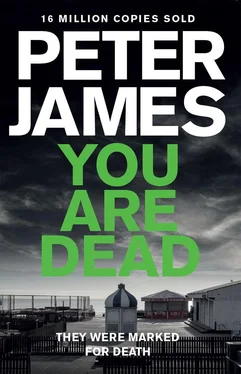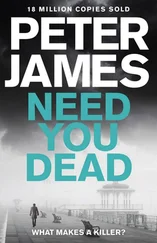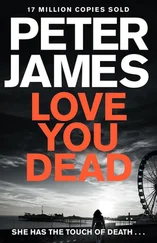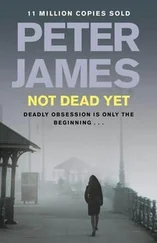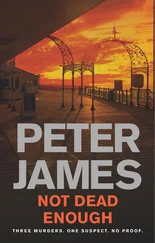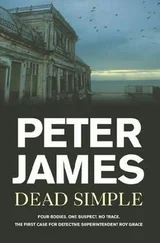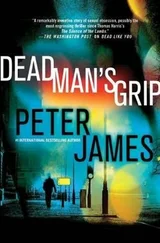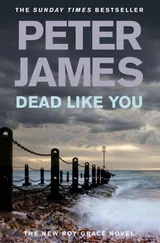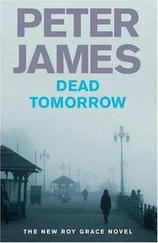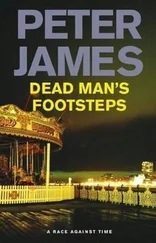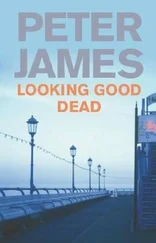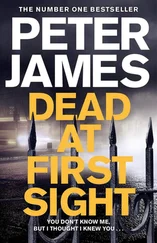‘No, sir. What do we currently have on him?’ she asked.
‘I’ve done a spreadsheet,’ DC Kevin Taylor said, proudly. ‘You might find this interesting, chief.’
Grace signalled him to go ahead.
‘Well, we know as a teenager that Crisp was present at the death of a young woman who bears a similarity to all his subsequent victims — despite the age difference — and to his estranged wife. The detective on that case was convinced Crisp was responsible for killing her but could never prove it. Denise Patterson, possibly his next victim, worked evenings part-time behind the bar in a pub he frequented whilst a student at Sussex University. Katy Westerham was a Sussex University student. All of them had a similar hairstyle. Then he married a young woman with a similar appearance and hairstyle, and the killings appear to have stopped.’
‘Good work, Kevin,’ Grace said. ‘Do your spreadsheets give us any indication where Crisp might be now?’
‘I’m afraid not, no, not so far. I’m working on another, on his credit-card spend. But I can’t predict from that where he might be now.’
Grace nodded. ‘OK, so far the search of his house has discovered three different false passports and large quantities of cash in five different foreign currencies.’
‘So he could be anywhere in the world?’ Jon Exton said.
‘Yes,’ Grace said, despondently.
‘Anywhere in the world, under any name,’ Exton continued.
‘But why would he have left so much money and these passports behind?’ Grace asked. Then suddenly he had a thought. Norman Potting’s crude quip had jogged something in his tired mind. He’d struggled to take it all in at the time, because it was so surreal. Now some of Crisp’s words came back to him.
They called me Mole, because they didn’t like my interest in tunnels and potholing.
He turned to the POLSA. ‘Lorna, has your team checked every drain and manhole on the two properties and the grounds?’
‘Yes, guv. We brought in a sludge sucker. All the drains have been emptied and their contents taken to be analysed. We lowered remote cameras down every manhole, and we checked under the cover of his swimming pool. We also brought in Ground Penetrating Radar and checked both gardens and the cellars of both houses.’
He thanked her and then stood up and turned to the whiteboard on which were pinned the aerial maps taken earlier from the helicopter. The boundaries of both properties had been outlined in thick red marker pen. ‘Somehow, Crisp left one or the other of these properties, abducted PC Masters, brought her back whilst she was unconscious, imprisoned her, then left again — and no one saw him. Maybe we should rename him Harry Houdini.’ He turned, grimly. ‘I can accept that maybe the Surveillance Team missed him exiting or arriving back once — but not three times.’
‘There’s no way we missed him even once, boss,’ Pete Darby assured him.
Grace turned back to the aerial map, and pointed. ‘Both of these properties are accessed from Tongdean Villas. There are twenty properties to the east and the immediate neighbour on that side has four guard dogs — there’s little likelihood Crisp could have used that as an exit. There are two properties to the west and then Tongdean Road. There are further substantial properties to the north of the two homes, directly beyond the perimeter walls, all protected with CCTV, which we understand has shown nothing. Crisp had to have entered and exited via Tongdean Villas. There is no other—’
Then he hesitated, as he noticed something for the first time, and wondered how he hadn’t seen it before. Diagonally north-west of Crisp’s house was an isolated building, a large shed or a double garage. The access to it was from Tongdean Road, a steep hill. There was a driveway to it, bounded on both sides by brick walls.
The garage was about a hundred yards from the derelict house.
Was it possible, he wondered?
Anything with Crisp seemed possible. He turned back to his team. ‘I’m terminating this briefing early.’ He pointed to Glenn Branson, Guy Batchelor, Lorna Dennison-Wilkins, and four others. ‘Come to MIR-1 right away.’
Sunday 21 December
An hour and a half later, with the search warrant signed, Grace, Branson and Guy Batchelor went through the tall wooden gates that screened the building off from the street, walked swiftly through light drizzle and up the neglected-looking driveway between the brick walls, following a dog handler and Inspector Anthony Martin, plus seven members of the Local Support Team in body armour and riot helmets. A short distance in front of them, lit by the beam of their torches, was a lichen-covered breeze-block garage with two up-and-over doors that looked in newer condition than the rest of the dilapidated construction itself.
One LST officer held the bosher, another a crowbar. Grace signalled everyone to wait, then telling Branson to take the right-hand side, he ran down the left, looking for a window or another way in — or out. They met around the rear, where there was a discarded, rusted bicycle that clearly had not been used in years, and was almost covered in fallen leaves. But there was no door.
Grace hurried back round to the front and gave a nod to Martin. The Inspector issued an instruction. Instantly one LST officer stepped forward and tried the handle of the right-hand door, but it did not budge. He moved aside and his colleague swung the battering ram. There was a loud metallic clang and the door shook but did not give. Then the officer with the crowbar tried to jam it between the side of the door and the wall, without success.
‘Shit,’ he gasped from the exertion. ‘These things are usually as flimsy as hell.’ Two others grabbed sections of the crowbar and all three of them tried, grunting. Then with a metallic screech it went in behind the edge. They levered the gap wider, inch by inch, for some moments, the door protesting. Then suddenly something gave, with a sound like a shot, and the door partially detached from its mountings and dropped down.
They trooped in through the gap, with Roy Grace right behind them, then stopped. One of them found the light switch and turned it on. Two vehicles sat there, side by side on the concrete screed. The old Volvo and a Skoda estate in the turquoise and white Brighton Streamline taxi livery. Behind them was a Lambretta motor scooter, with a helmet on the pillion.
And now he knew for sure he was in the right place. The old Volvo estate that had been sighted by witnesses the night that Logan Somerville had been abducted. A Skoda taxi had been seen on CCTV following Ashleigh Stanford’s bicycle.
As the LST officers swarmed around the vehicles, opening the doors and boot and bonnet and checking underneath, Grace touched the bonnets of both vehicles. They were stone cold. He gazed around the interior of the building, at the bare walls, looking for any clues. There was a solitary metal shelf on which sat a tyre pump and gauge, a set of jump leads and a trickle charger. Further along the garage was an ancient chest freezer, covered in dust and unplugged.
He knelt down and looked first underneath the Volvo, then the Skoda for himself. Nothing. Then a voice called out, urgently, ‘Sir! Take a look here!’
One of the female LST officers stood by the freezer, holding its lid up. He hurried round, along the side of the Volvo and looked inside.
And felt a surge of excitement.
Sunday 21 December
The exterior of the freezer was just a shell. All the baskets had been removed, and there was just a sheet of rusty tin covering the base. Roy Grace leaned over into the freezer and eased his fingers under one edge of the rusty tin, then prised it up, instantly feeling a blast of dank, cold air.
Читать дальше
